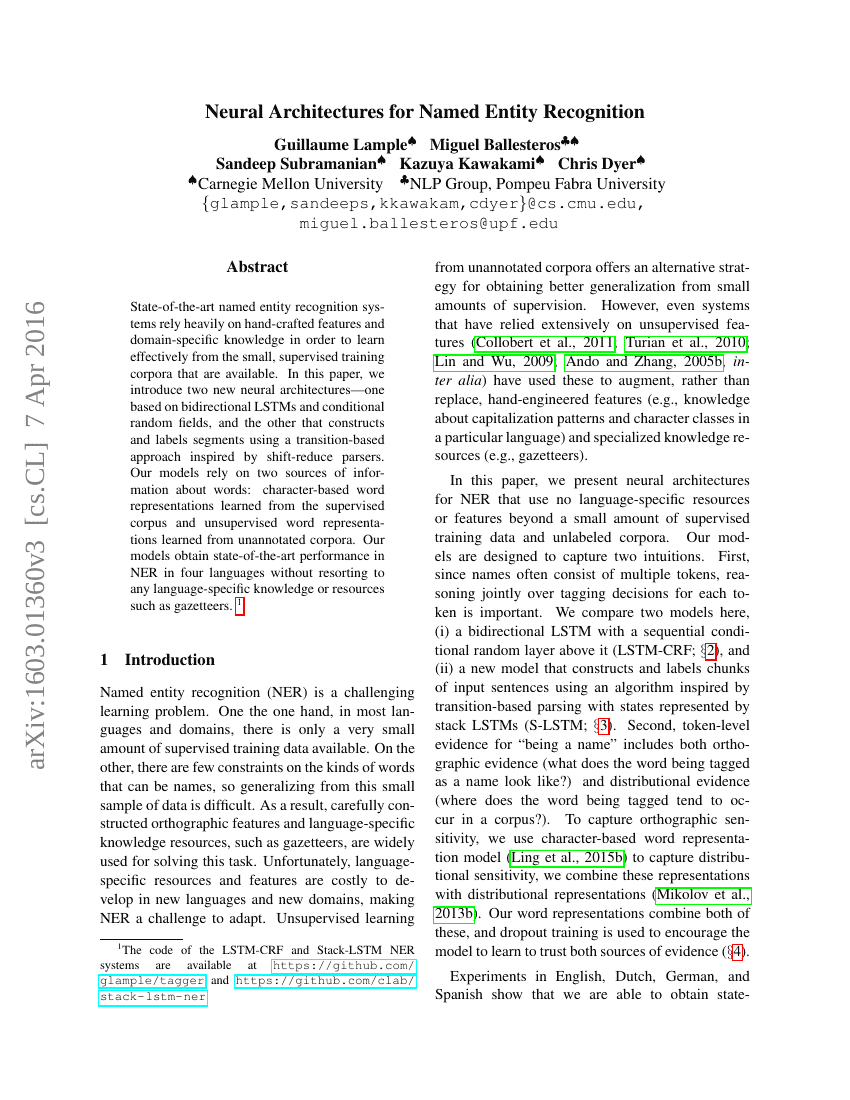Command Palette
Search for a command to run...
Guillaume Lample; Miguel Ballesteros; Sandeep Subramanian; Kazuya Kawakami; Chris Dyer

Abstract
State-of-the-art named entity recognition systems rely heavily on hand-crafted features and domain-specific knowledge in order to learn effectively from the small, supervised training corpora that are available. In this paper, we introduce two new neural architectures---one based on bidirectional LSTMs and conditional random fields, and the other that constructs and labels segments using a transition-based approach inspired by shift-reduce parsers. Our models rely on two sources of information about words: character-based word representations learned from the supervised corpus and unsupervised word representations learned from unannotated corpora. Our models obtain state-of-the-art performance in NER in four languages without resorting to any language-specific knowledge or resources such as gazetteers.
Code Repositories
Benchmarks
| Benchmark | Methodology | Metrics |
|---|---|---|
| named-entity-recognition-ner-on-conll-2003 | LSTM-CRF | F1: 90.94 |
| named-entity-recognition-on-conll | LSTM-CRF | F1: 91.47 |
Build AI with AI
From idea to launch — accelerate your AI development with free AI co-coding, out-of-the-box environment and best price of GPUs.